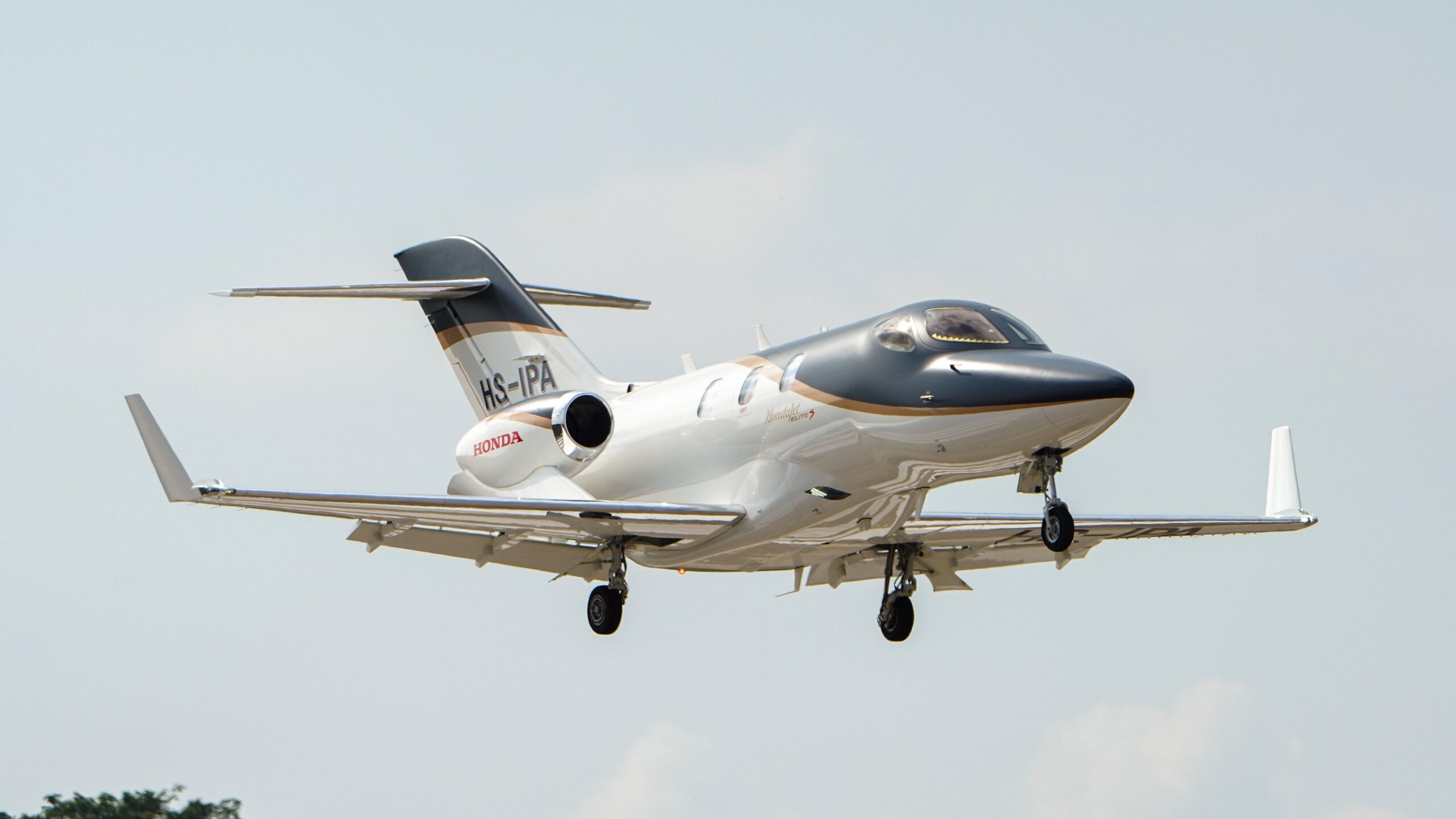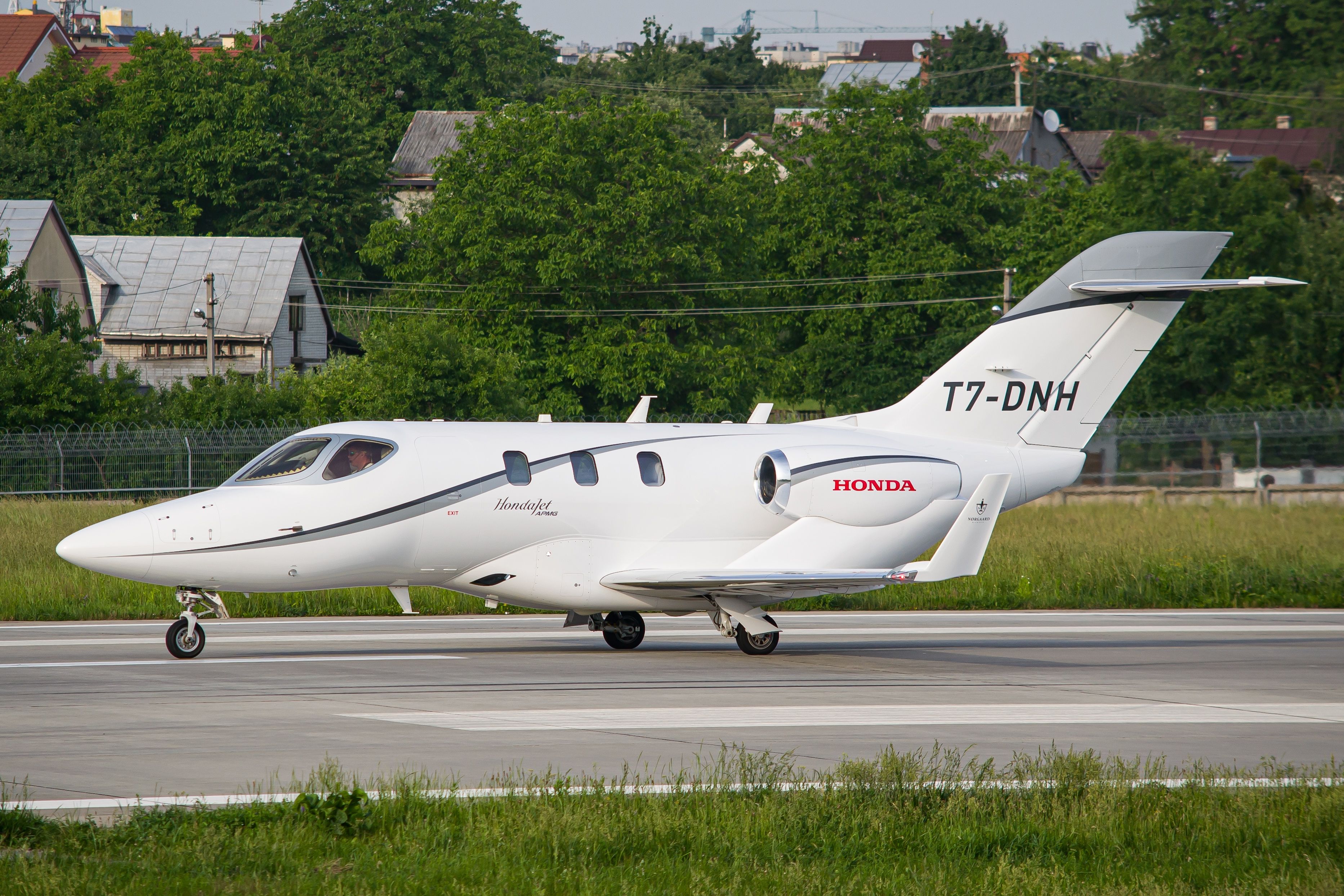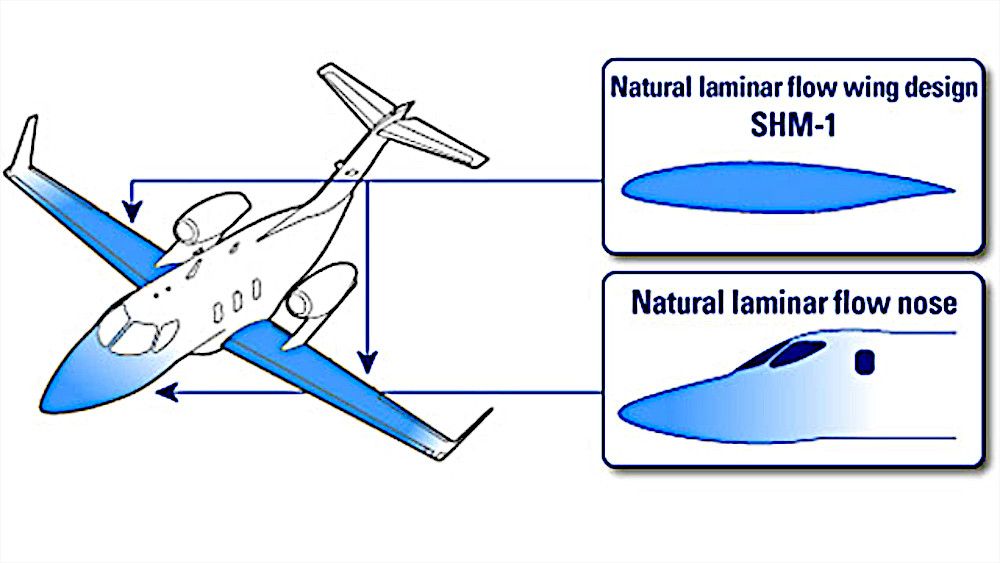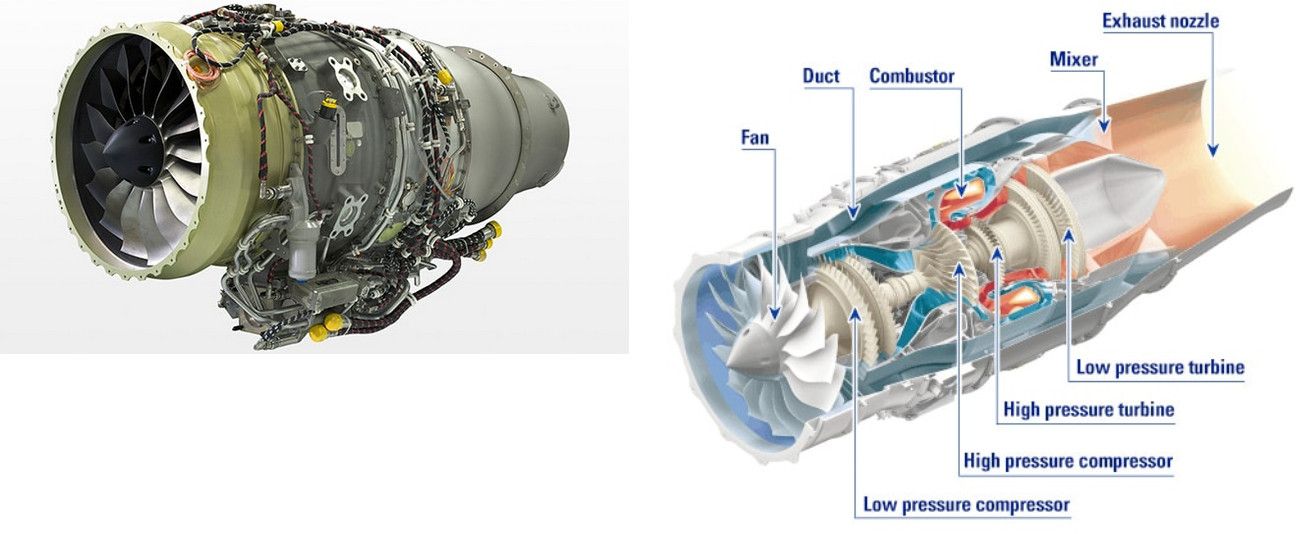Simple Flying has previously discussed the small but mighty HondaJet, as it is particularly notable within the very-light business jet class. Although well-known for its efficiency, speed, and overall flight performance, what advancements have made this aircraft so capable?
1
Over-The-Wing Mounted Engines
Improves fuel efficiency
- Length: 42.62 ft (12.99 m)
- Wing Span: 39.76 ft (12.12 m)
- Height: 14.90 ft (4.54 m)
You almost always find large components like jet engines under the wings or near the rear of the fuselage (there are a few exceptions, including but not limited to the VFW-Fokker 614, Boeing YC-14, and some Antonov planes), as smooth air flowing over the wings is required for lift. But for the HondaJet, its team poured research into an Over-The-Wing Engine Mount (OTWEM) configuration that still achieves substantial aerodynamic performance.
Photo: Oleh Yatskiv | Shutterstock
This has a couple of key benefits. For instance, business jets typically have rear-mounted engines, requiring large support structures; without these, the HondaJet has more cabin and luggage space. Additionally, over-the-wing engines naturally help reduce noise and vibration since they are positioned away from the fuselage. According to Honda Aircraft Company,
“By moving the engines from the fuselage to the wing, the HondaJet minimizes the sound and vibration transmitted to the passengers, maximizing cabin comfort. This makes the HondaJet perfect for business travelers who need to catch up on work, or on sleep.”
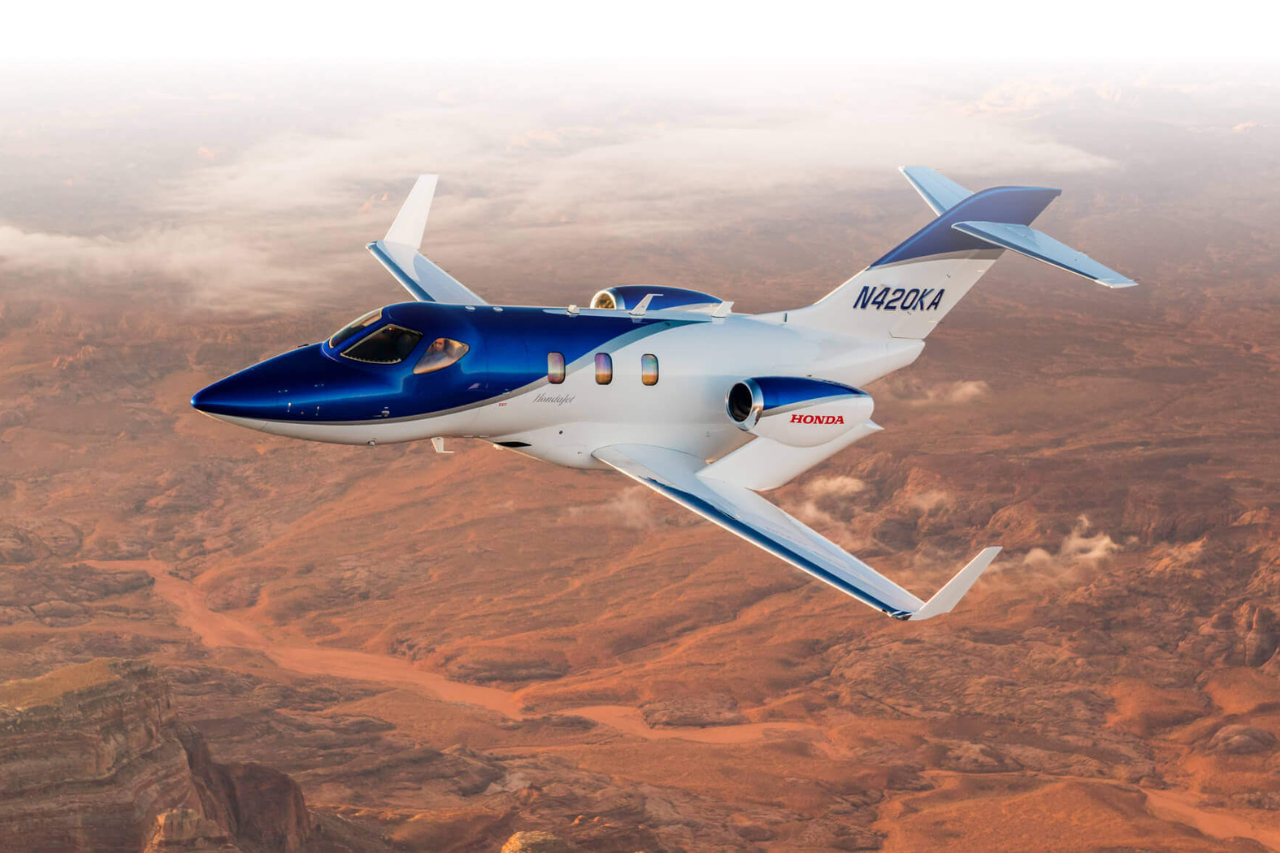
Related
What’s The Price of A HondaJet In 2024?
How much does it cost to buy a HondaJet HA-420 today?
2
Natural Laminar Flow Wings and Nose
Minimizes aerodynamic drag
- Cabin length: 17.80 ft (5.43 m)
- Cabin width: 5.00 ft (1.52 m)
- Cabin height: 4.83 ft (1.47 m)
Laminar airflow refers to when airflow on a surface, such as an aircraft wing, is smooth, creating significantly less skin friction drag than turbulent flow. Honda has designed Natural Laminar Flow (NLF) wing and fuselage nose shapes to maintain this laminar flow during high-speed flight, delivering impressive speed and fuel efficiency.
Photo: Honda
With an optimized number and position of the different panels and rivets, surface irregularities are minimized, significantly suppressing aerodynamic drag.
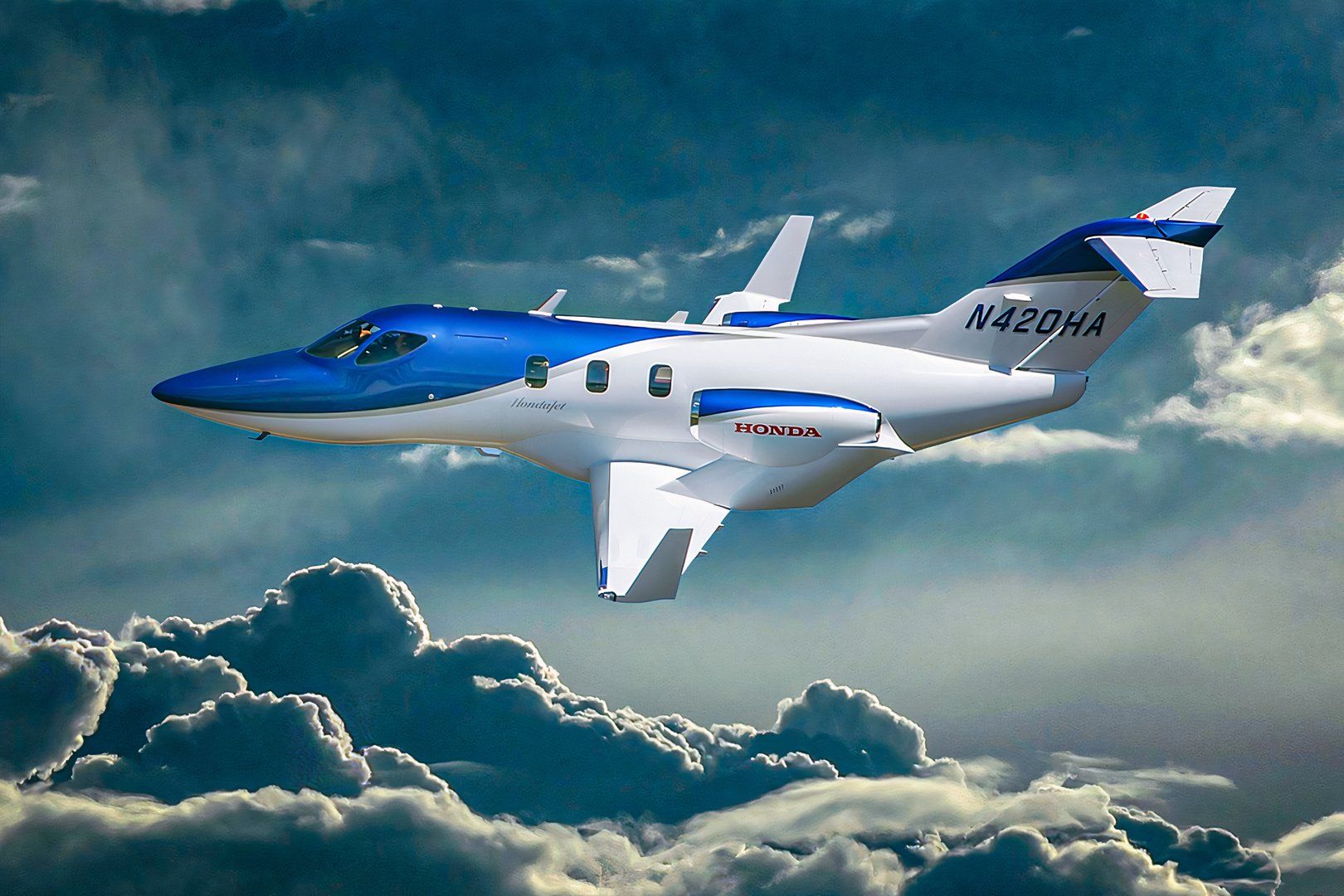
Related
What Is The Range Of The HondaJet 2600?
This Honda Jet, affectionately dubbed “Echelon,” boasts the ability to travel 2625NM
3
Integrally Molded Carbon Composite Fuselage
A lightweight structure
- Increased payload capacity
- More baggage space
- Fuel-efficient design
The HondaJet utilizes lightweight but strong carbon composite materials for its fuselage structure. Combining and integrally co-curing honeycomb sandwich panels with stiffened panels reduces aircraft weight and increases durability.
Photo: Honda
With its robust carbon composite fuselage, the HondaJet can fly safely at considerable altitudes for its class, which, as Honda suggests, has its own set of aerodynamic benefits compared to lower-altitude flight.
According to Honda Aircraft Company,
“The HondaJet fuselage is made of a carbon-composite material that is both stronger and lighter than the aluminum used in most other aircraft. Our engineers developed a manufacturing technique that combines two types of structural styles, a honeycomb sandwich panel that can be shaped for laminar airflow, and a stiffened panel designed for lighter weight, less noise and future design flexibility.”
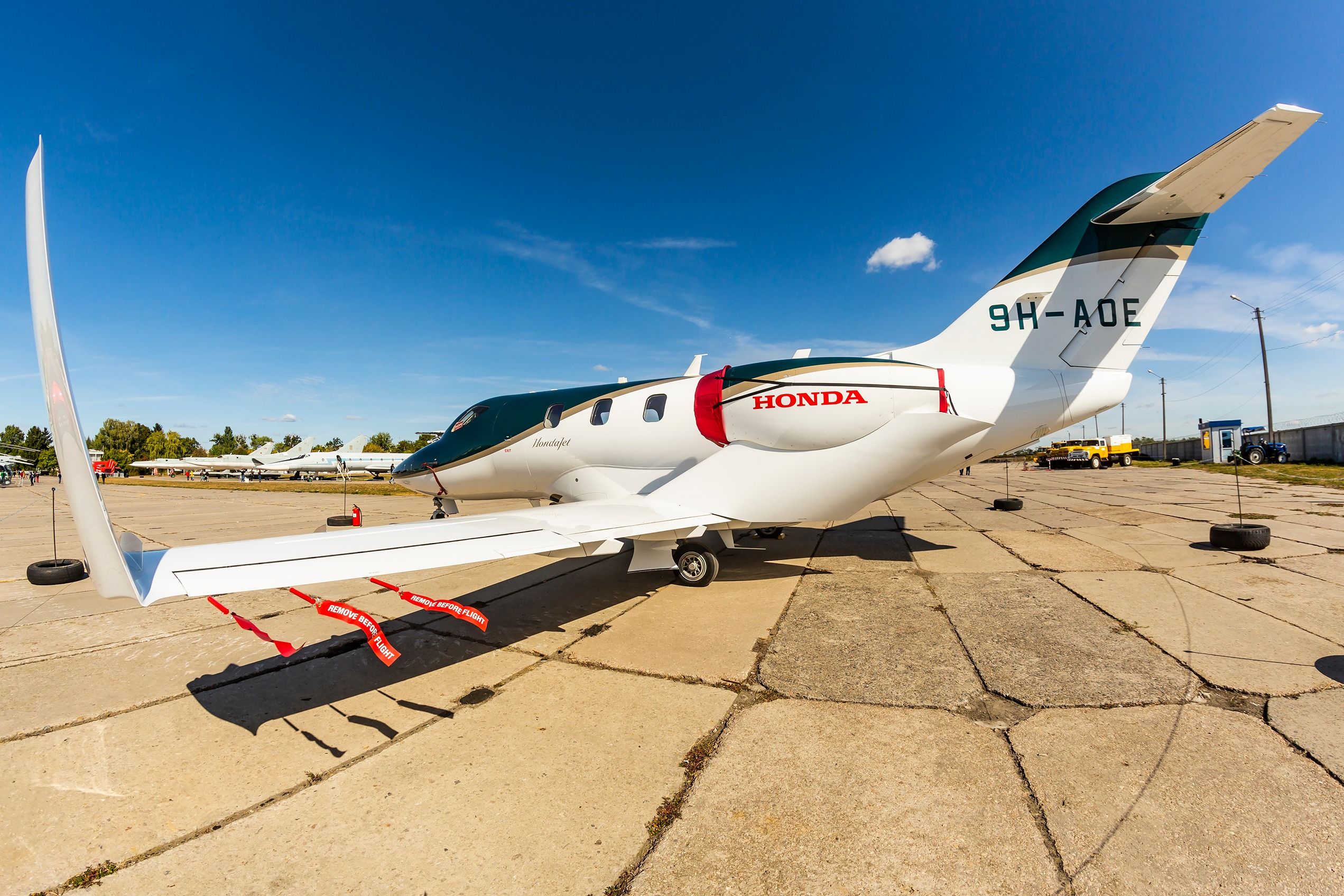
Related
How Much Does It Cost To Own & Operate A HondaJet?
If you are budgeting for a private jet next year and a HondaJet is in your sights, this might help you steer in the right direction.
4
The HF120 Turbofan Engine
Engine power: 2,050 lbf (9.1 kN)
- Overall pressure ratio: 24:1
- Bypass ratio: 2.9:1
- Turbine inlet temperature: 1,580 °F (860 °C) (Takeoff)
- Specific fuel consumption: <0.7 lb/lbf/h (71 kg/kN/h)
- Thrust-to-weight ratio: 4.4
Not only is the engine placement a key innovation of the HondaJet, but the engines are also rather interesting. The GE Honda Aero Engine, HF120, is a lightweight, compact, high-thrust turbofan engine designed to meet current carbon emission and noise standards.
Photo: Honda
Despite a small diameter of approximately 53.8 cm (21.2 inches), the HF120 is potent and features a “Full Authority Digital Electronic Control” to achieve high efficiency and reliability.
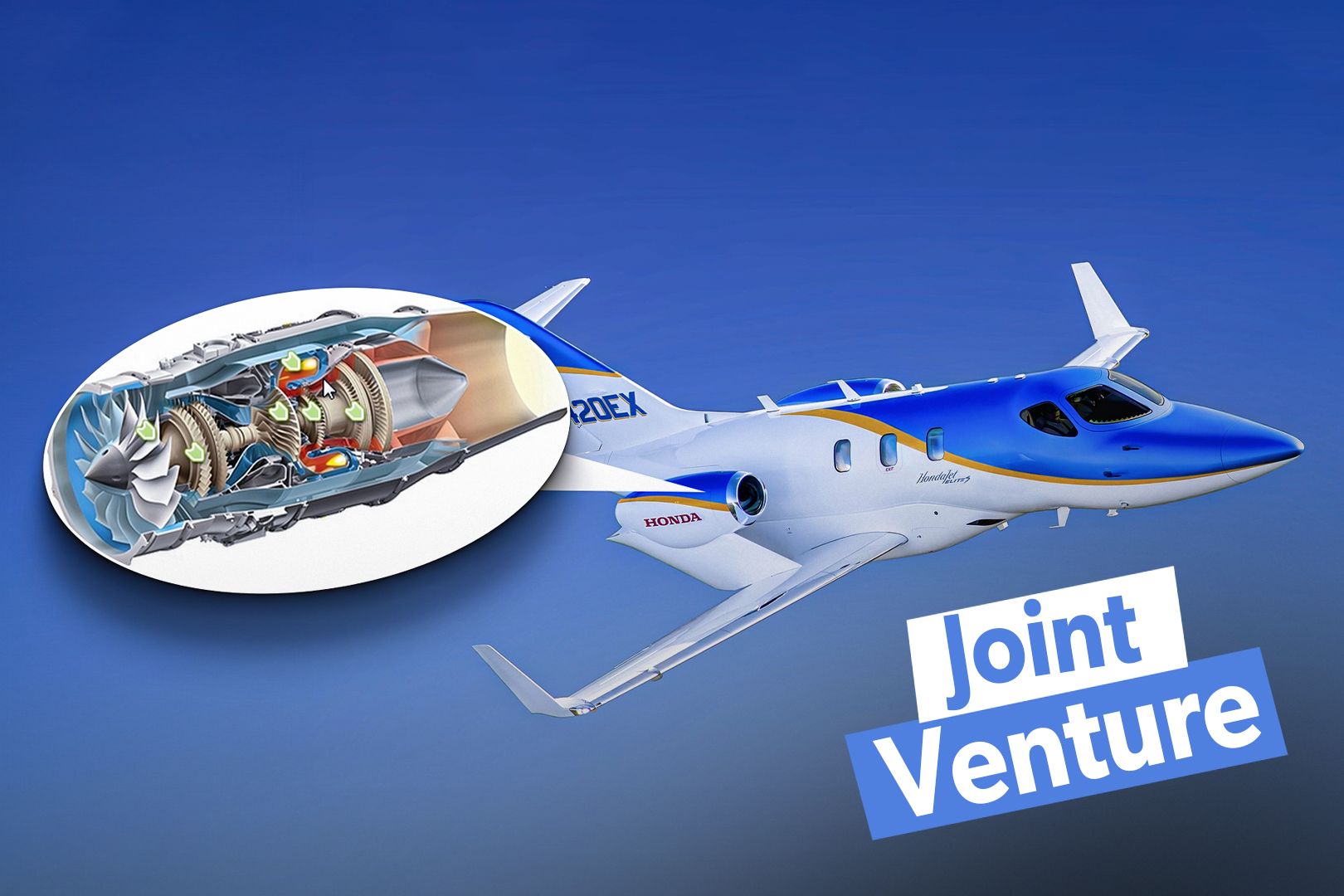
Related
Joint Venture: A Guide To General Electric And Honda’s Joint Venture Engine Agreement
The HF120 is the first engine produced as a result of the joint venture.
5
Advanced cockpit and cabin space
Flight safety and comfort
- Combined Stowage: 62 cubic ft
- Aft Compartment: 53 cubic ft
- Nose Compartment: 9 cubic ft
Business jets must be powerful and deliver an enjoyable experience for its pilots and passengers, and the HondaJet does not disappoint. Its cockpit is based on research into ergonomics and human factors, featuring enhanced cockpit space, a wide-visibility windshield, and optimally positioned flight instruments and controls. Facilitating single-pilot operations, the HondaJet’s cockpit is intuitive, featuring the Garmin® G3000 next-gen avionics system with multiple 14-inch high-resolution displays and dual touch-screen controllers.
For passengers, business jets might be a workplace or a comfortable place for conversation and relaxation. Honda mentions its jet has a sophisticated interior design with completely adjustable executive seating, a fully private lavatory, and a class-leading seat pitch. According to the manufacturer,
“With its Over-The-Wing Engine Mount, the HondaJet requires no engine support structure inside the fuselage. This gives the HondaJet up to 20% more cabin space than similar sized business jets, which means more passenger legroom, more room for luggage, and enough space for a fully private lavatory with skylights.”

Related
Several Variants: 6 Notable Honda Business Jets
Here is a comprehensive compilation of all HondaJet models.

